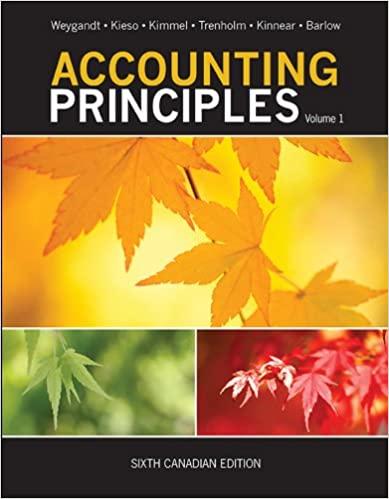Question
1. What does the accountant need to know to calculate unit cost? a. materials cost plus overhead b. the output for a period and the
| 1. What does the accountant need to know to calculate unit cost?
|
| 2. How is unit cost calculated?
|
| 3. A cost transferred from a prior process to a subsequent process is referred to as
|
| 4. Units transferred from a prior process to a subsequent process are referred to as
|
| 5. Equivalent production expresses all activity of the period in terms of
|
| 6. Two methods used to determine equivalent units of production in process costing are
|
| 7. Beginning inventory for the month contained 2,000 units that were 70% complete with respect to materials. During the month, 60,000 units were completed and transferred out. Ending inventory contained 3,000 units, 20% complete with respect to materials. The weighted average equivalent units of production for materials for the month would be
|
| 8. Estimating the degree of completion of ending work in process requires:
|
| 9. Beginning inventory for the month contained 3,000 units that were 60% complete with respect to materials. During the month, 50,000 units were completed and transferred out. Ending inventory contained 5,000 units, 30% complete with respect to materials. The weighted average equivalent units of production for materials for the month would be
|
| 10. The following information is provided:
Materials are added at the beginning of the process. Equivalent units of production for conversion costs using the weighted average method would be
|
| 11. The following information concerns Schroeder's equivalent units in May:
Using the weighted average method, what are Schroeder's equivalent units for May?
|
| Figure 6-5. For the current period, Haley Co. started 20,000 units and completed 8,000 units, leaving 12,000 units in process 40% complete. |
| 12. Refer to Figure 6-5. How many equivalent units of production did Haley Co. have for the period?
|
| 13. Refer to Figure 6-5. If Haley Co. incurred $31,800 in production costs what was Haley's cost per equivalent unit for the period?
|
| 14. The following information is provided:
Materials and conversion are incurred uniformly throughout the process. Equivalent units of production for conversion using the weighted average method would be
|
| Figure 6-6. The Martin Company uses the weighted average method. The beginning work in process consists of 6,000 units (100% completed as to materials and 50% complete as to conversion costs). The number of units completed was 120,000. The ending work in process consists of 10,000 units (100% complete as to materials and 20% complete as to conversion costs). |
| 15. Refer to Figure 6-6. What are the equivalent units of production for conversion costs?
|
| Figure 6-1. The following information is available for Department Z for the month of July:
Materials are added at the beginning of the process. (Round unit costs to two decimal places.) |
| 16. Refer to Figure 6-1. Department Z's cost per equivalent unit of production for materials using the FIFO method would be
|
| 17. Refer to Figure 6-1. Department Z's cost per equivalent unit of production for conversion costs using the FIFO method would be
|
| 18. Refer to Figure 6-1. Department Z's cost of goods transferred out using the FIFO method would be
|
| 19. Refer to Figure 6-1. Department Z's cost of ending work in process using the FIFO method would be
|
| 20. Under the FIFO production costing method, the two categories of completed units used to compute the total cost of units completed during a period are:
|
Step by Step Solution
There are 3 Steps involved in it
Step: 1

Get Instant Access to Expert-Tailored Solutions
See step-by-step solutions with expert insights and AI powered tools for academic success
Step: 2

Step: 3

Ace Your Homework with AI
Get the answers you need in no time with our AI-driven, step-by-step assistance
Get Started


